What flies do I need to get started fly fishing?
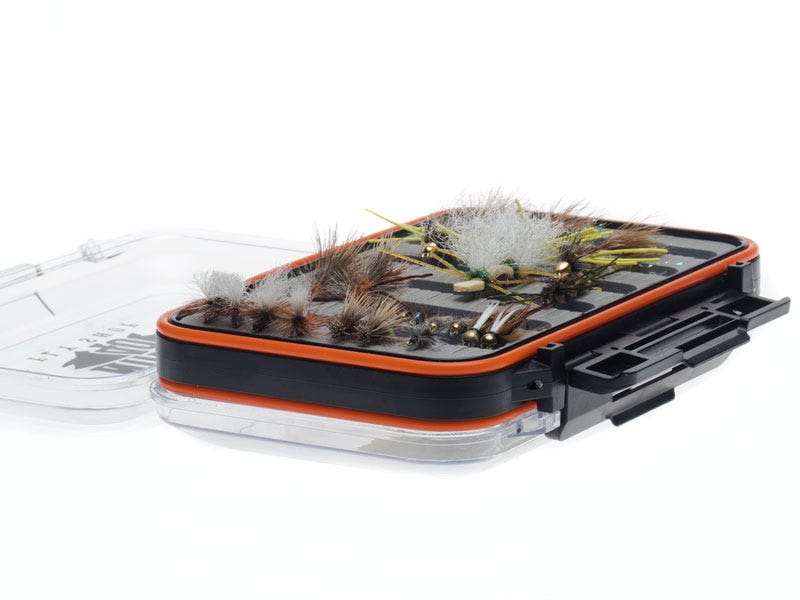

First off, although nearly every species of fish can be caught on a fly, I’m going to answer this assuming we are asking what flies should I buy to get started fly fishing for trout.
I’ve got this question a lot over the years, and if you want to understand fly fishing for trout at all- pay attention.
The first, truest, and most frustrating answer is, "It depends."
It’s necessary to know where you are fishing, on what type of water, and what time of year to answer this question at any one point in time. If you go to a local fly shop in your area, you'll get the best information if you can give the shop employees an idea of where you will be fishing, and when you plan on going.
However, again, I’m going to assume that we want to fish for trout throughout the year and we are looking to buy our first assortment of flies to "fill the box."

Secondly, I think it’s essential that anyone getting in to this to remember that fly fishing in theory is very simple.
We need to figure out what the fish are eating, and then present an imitation of that as naturally as possible to trick the fish in to thinking it is the real thing. Simple!?
Honestly, it kind of IS, if you just focus on what you're trying to accomplish. Worry less about your casting stroke, your gear, what that guy in that book said and just focus on imitating what the fish are eating... without disturbing the fish.
The most common insects that you will come across include stoneflies, mayflies, midges, terrestrials, and drakes.
There are multiple kinds of each of these types that "hatch" throughout the year which we will reference. Here is an assortment of the most basic flies that imitate the insects you are most likely to encounter trout eating. In other words, here’s your starter pack.
Dry Flies: Dry flies ride on top of the water and imitate the adult insect.
First up on the list, perhaps the most basic pattern... the elk hair caddis.
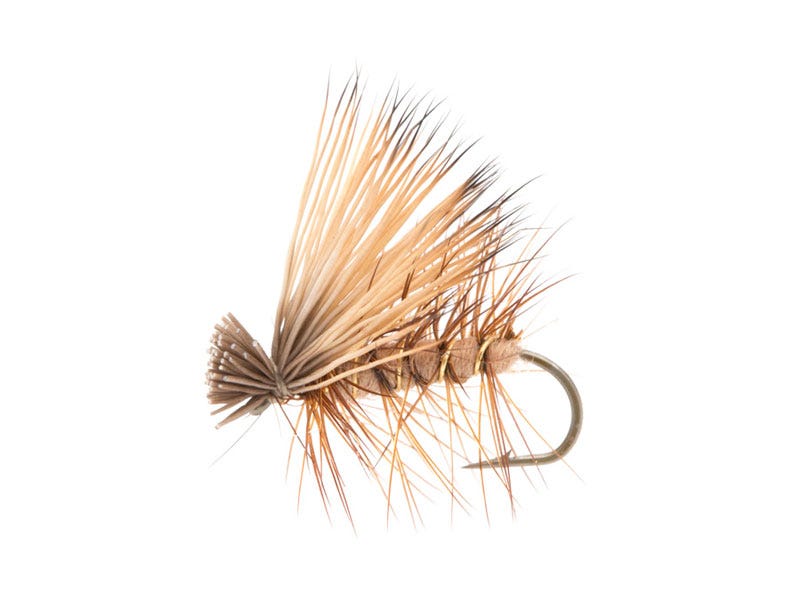
This is the most basic pattern that represents a caddis fly, in its larger sizes it could also represent a spruce moth, or even an October caddis. In your starter pack you should buy some size #16 caddis flies in brown, tan, or olive.
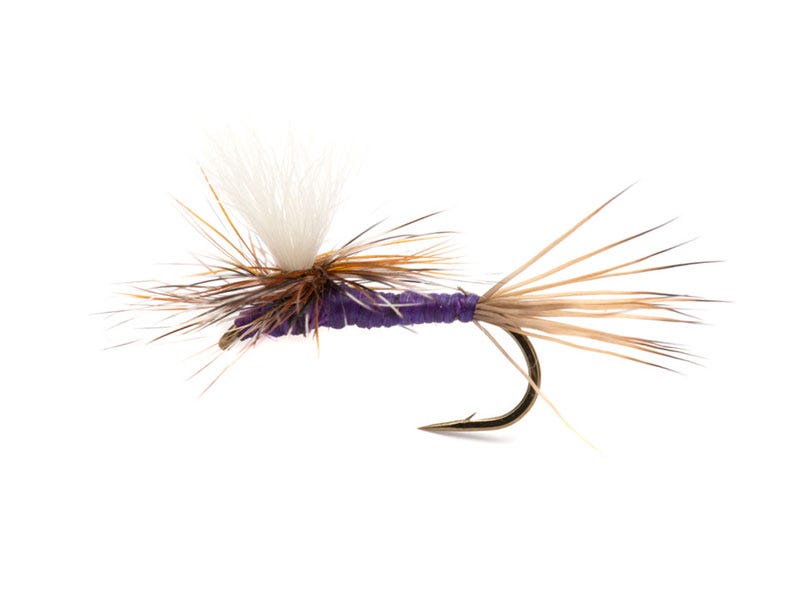
A few people might disagree with me here because the purple haze is not an old traditional pattern, it is an adaptation of one of the most traditional patterns of all time called the Adams, and eventually parachute Adams.
However, today in nearly every fly shop the purple haze is a staple that represents a very wide range of insects including Blue Winged Olives (Baetis), Mahoghony’s, March Browns, Brown Drake’s, and in the right situation most every type of Mayfly (aka Pale Morning Dun’s, Blue Winged Olives, and others) or Drake’s (aka Brown Drakes, Green Drakes, and others) that there are.
In your starter pack you should get these in both size #14 and #16.
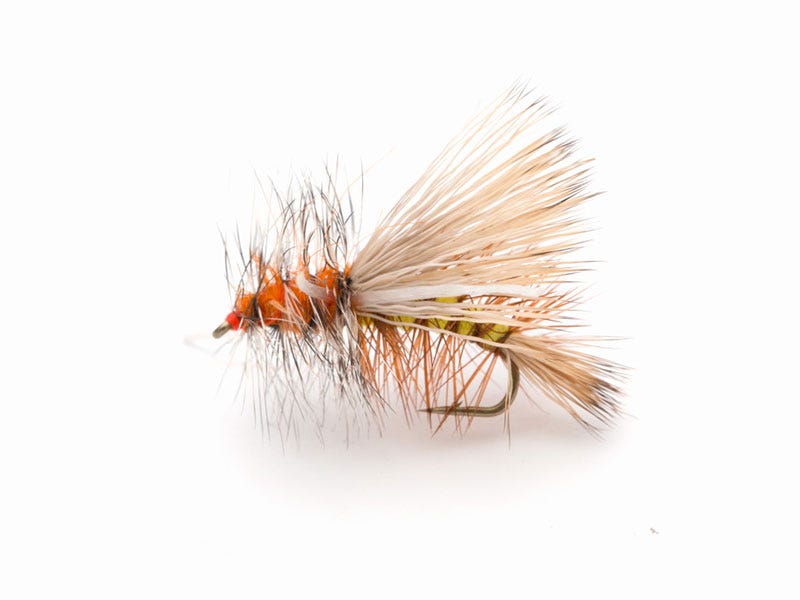
The stimulator represents a stonefly, and depending on what sizes and colors you buy, it can represent nearly every stonefly out there from skwala, to golden stone, to a salmonfly (these are all names of different type of stoneflies).
The stimulator can also represent a grasshopper and in smaller sizes a caddis. In your starter pack you should buy these in both size #8 and #10 in colors Yellow and Orange.
You’re going to need floatant to keep dry flies from sinking.
Griffith’s Gnat
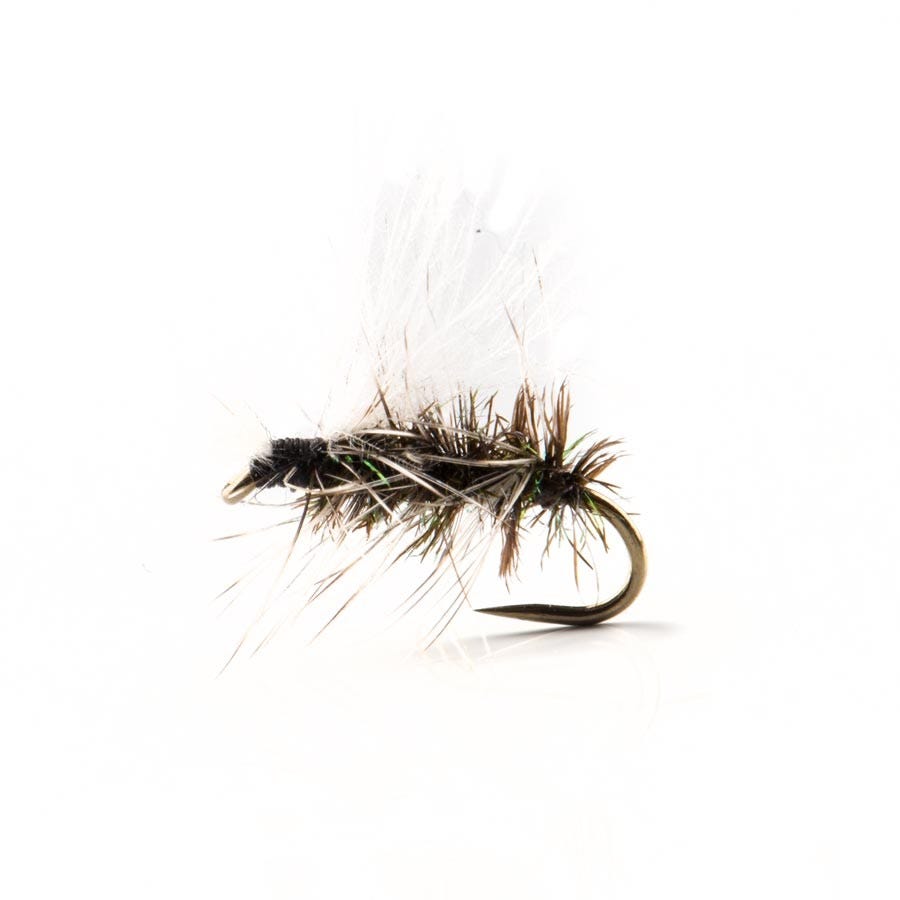
The Griffith’s Gnat is a midge... and these days we have a hi-viz option (picture above and available here). If you have ever been fishing and have seen small "clouds" forming almost like a mini funnel cloud on the banks those are midges. It can also be used to imitate a small mayfly like a BWO (Blue Winged Olive). In your starter pack buy these in size #18.
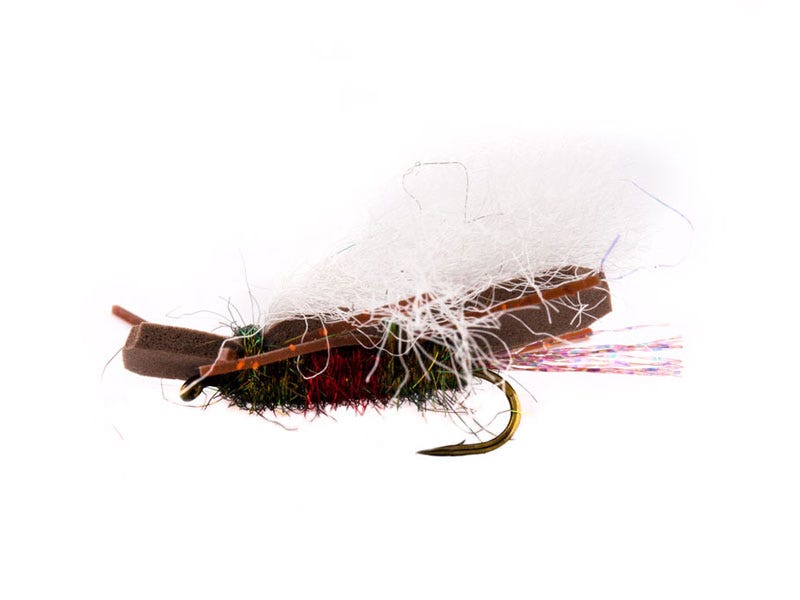
People who know me will laugh this is on my list because I’ve given this fly a pretty hard time, but the truth is that this fly is mandatory. This fly is easy to see and imitates stoneflies or hoppers, and sometimes even drakes if that’s all you have to work with. In your starter pack buy this fly in #10 in tan, and royal.
Nymphs: These are flies that imitate insect under the water.
These flies have not yet matured in to adults. Since you can not see fish eating these flies to know what they are eating we often use a screen or a "seine" to check to see what type of nymphs are in the water before we start fishing.
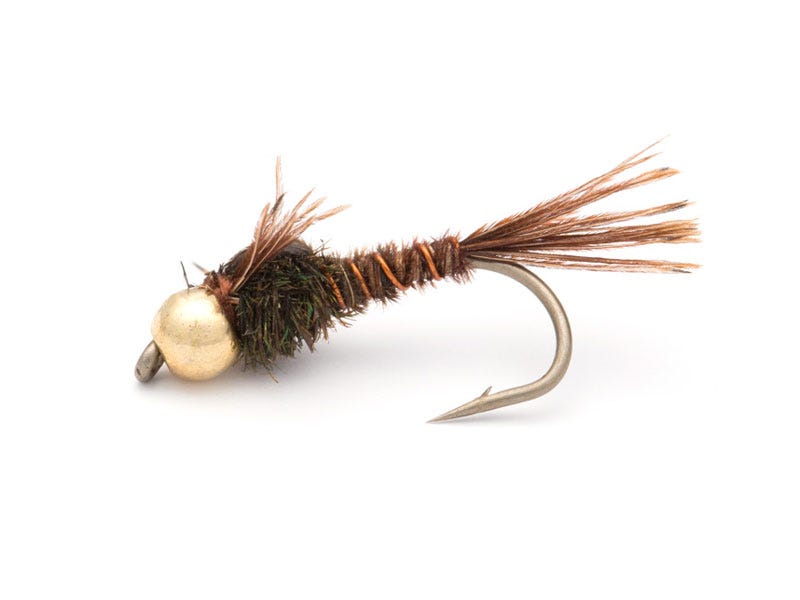
This fly imitates the mayfly nymph (mayflies include Blue Winged Olives or Pale Morning Dun’s). In your starter pack get this in size #16 and we recommend to start by getting the beaded version.
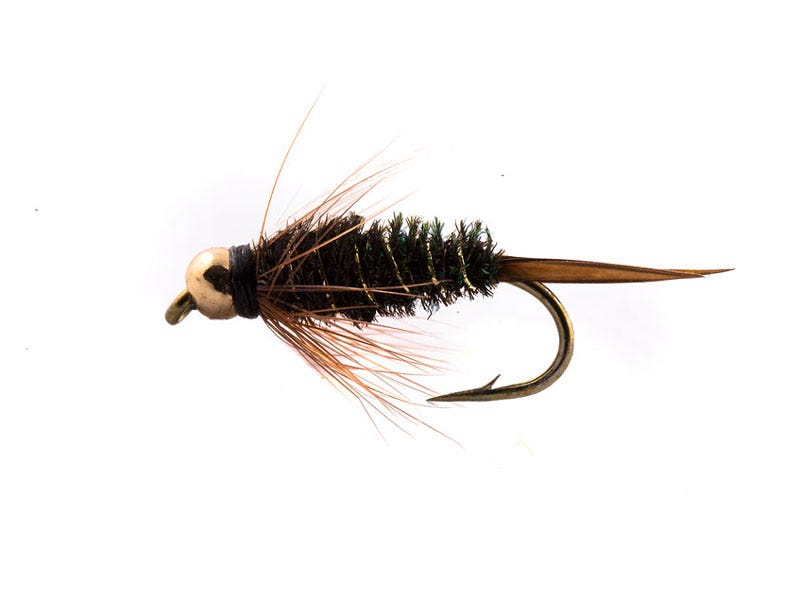
This is probably our number one selling fly since forever. It represents a stonefly (stoneflies include Little Black Stoneflies, skwalas, golden stones, and many others). Get this fly in size #12 and #14 in the beaded version.
Hare’s Ear Nymph
This fly also represents a stonefly but it’s lighter in color. However, this fly can also work as a caddis pupa imitation. Get this fly in size #14 in the beaded version. To replicate the caddis pupa, we have this.
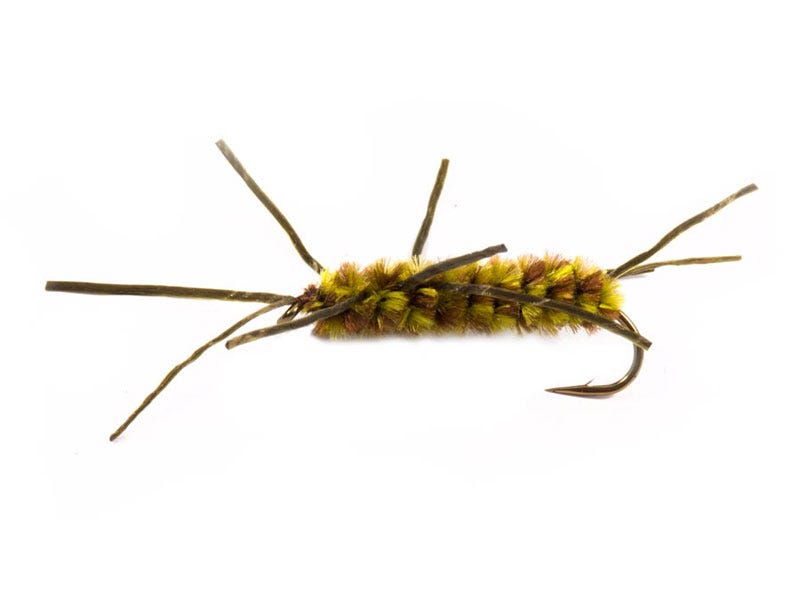
These imitate the stonefly nymph. However, they are deadly, weighted flies that work extremely well. Get this fly in size #8 and #10 in any color with brown/black, brown, and tan/brown being the most popular.
You will most likely be more effective by having some indicators (here) as well as some split shot to fish nymphs properly.
Streamers: these flies imitate baitfish, sculpin or even crayfish.
These flies are generally larger and fished by adding action to them. Sometimes they can also be swung or even dead drifted.
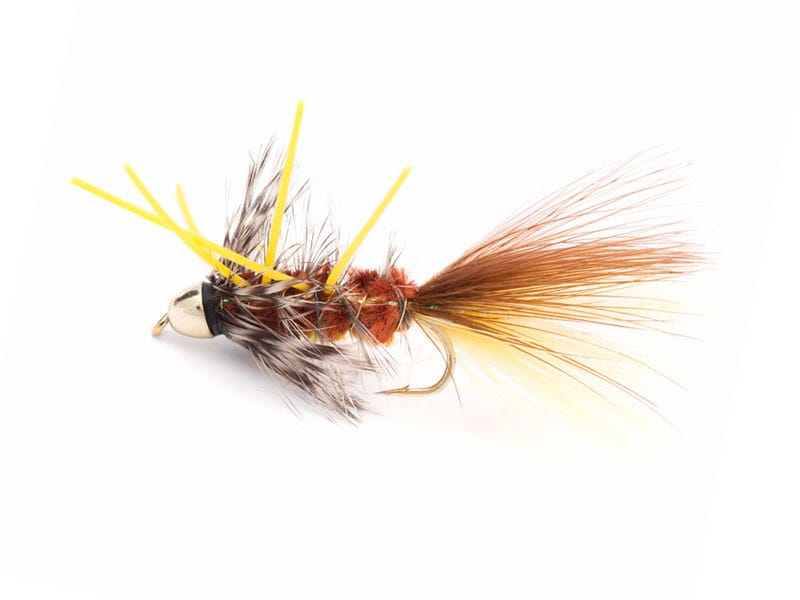
There is only one streamer on this list and it’s the JJ Special. I left it at this because if you get in to streamer fishing you will become addicted and have many of your own opinions.
However, for now the great thing about the JJ Special is that is it extremely effective and can imitate a sculpin, a fleeing baitfish or even a crayfish very well.
There you go! That’s it.
We’ve culled it down to just 10 flies that you need to get started. I promise you though that your list will grow fast in what you think is required and that’s part of the fun of all of this. Just remember what we said in the beginning though. This doesn’t have to be so hard.
Focus on figuring out what the fish are eating so that you can try to imitate it.
Next, let’s figure out how to use these flies properly so that we can make them look like the real thing in the water.
If you still have questions, or questions about your specific area (we fish everywhere around the world, and like most fly shops, have contacts all over the states) use the form below and reach out to us--we will get you sorted with the right flies for your water in the next 48 hours.
